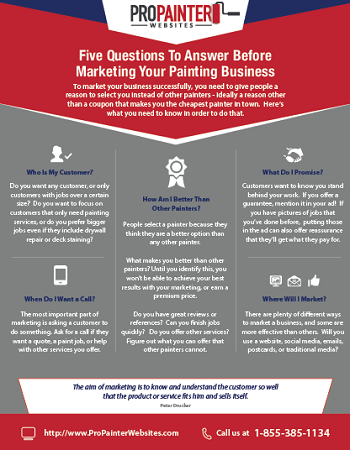Comprehending Seasonal Influences On Commercial Outside Painting: Crucial Knowledge For Success
Comprehending Seasonal Influences On Commercial Outside Painting: Crucial Knowledge For Success
Blog Article
Web Content Create By-Burnham Whalen
When you're preparing a business outside painting project, seasonal variables can make or break your results. You'll want to consider just how temperature level and humidity impact paint application and drying out times. Selecting the right period can guarantee your paint sticks properly and lasts much longer. But which periods are truly the best for this type of work? Allow's explore the crucial elements that can affect your project's success.
The Influence of Temperature Level on Paint Application
When you're planning an industrial external painting task, the temperature level can dramatically affect exactly how well the paint adheres and dries.
Ideally, you intend to paint when temperatures vary in between 50 ° F and 85 ° F. If it's too cold, the paint might not heal properly, bring about concerns like peeling off or breaking.
On the flip side, if it's as well hot, the paint can dry out also quickly, protecting against appropriate adhesion and causing an unequal surface.
You need to likewise take into consideration the moment of day; morning or late afternoon provides cooler temperature levels, which can be a lot more desirable.
Constantly inspect the producer's suggestions for the certain paint you're utilizing, as they commonly supply advice on the excellent temperature level variety for optimum outcomes.
Moisture and Its Impact on Drying Times
Temperature isn't the only environmental aspect that influences your industrial external painting task; moisture plays a significant duty also. High moisture levels can reduce drying times significantly, affecting the total top quality of your paint job.
When the air is filled with wetness, the paint takes longer to treat, which can result in issues like bad attachment and a higher danger of mildew development. If you're painting on a particularly damp day, be prepared for prolonged wait times in between layers.
It's critical to monitor local weather and strategy appropriately. Preferably, go for see more in between 40% and 70% for ideal drying.
Keeping these factors in mind guarantees your task stays on track and delivers a long-term coating.
Best Seasons for Commercial Exterior Paint Projects
What's the most effective season for your commercial external paint projects?
Spring and early autumn are usually your best options. During these periods, temperatures are mild, and humidity degrees are usually lower, creating suitable conditions for paint application and drying.
Stay clear of summer season's intense heat, which can trigger paint to dry too rapidly, leading to poor adhesion and finish. Similarly, winter months's cold temperatures can prevent appropriate drying and treating, risking the long life of your paint task.
Go for days with temperatures between 50 ° F and 85 ° F for ideal outcomes. Keep in do paints expire to inspect the neighborhood weather report for rain, as wet problems can ruin your project.
Planning around these aspects guarantees your paint job runs efficiently and lasts longer.
Final thought
In conclusion, preparing your industrial outside painting tasks around seasonal considerations can make a substantial distinction in the end result. By organizing job throughout the ideal temperature levels and moisture levels, you'll guarantee better adhesion and drying out times. Bear in mind to watch on regional weather prediction and pick the correct time of year-- spring and early fall are your best options. Taking these steps will assist you accomplish a long lasting and professional surface that lasts.
